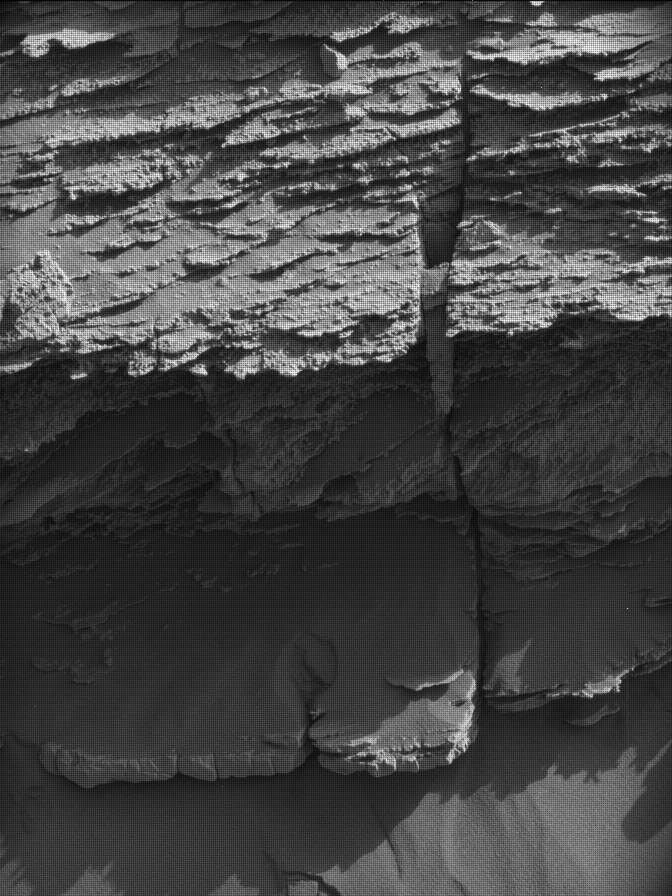Over the weekend, Curiosity successfully off-loaded the sample she acquired previously, the "Ogunquit Beach" sand sample, in preparation for what the science team hopes is acquisition of a new *drilled* rock sample very soon. Curiosity has a sophisticated sample handling and preparation system, known as the Sample Acquisition/Sample Processing and Handling (SA/SPaH, "saw-spa") system. SA/SPaH has the ability to divide a drilled or scooped sample up into different ranges of particle sizes. In the case of the Ogunquit Beach sample, the finest particle size range corresponded to the material that was delivered to both SAM and CheMin. It is known as the post-sieve sample. The larger particle size range material, which was just along for the ride within SA/SPaH, is known as the pre-sieve sample. The first round of MAHLI imaging of both the pre-sieve and post-sieve samples, dumped into separate piles in the workspace, was successful over the weekend, as was the APXS analysis of the post-sieve pile. In today's plan, MAHLI will return to both dump piles for closer approach images to better resolve the fine sand particles in each pile, and APXS will analyze the pre-sieve dump pile. ChemCam will get a turn at the dump piles, acquiring reflectance spectra from the pre-sieve dump pile and a raster over the post-sieve dump pile. ChemCam is kind enough to wait to shoot the dump piles until MAHLI and APXS look closely at them so the pile is not blasted away by the laser! ChemCam will also acquire a raster over the dark gray pebble target "Black Cuillin," which is one of the larger pebble targets strewn among the bedrock in the workspace. Curiosity will squeeze in some looks skyward, measuring dust load in the atmosphere and acquiring movies to look for dust devils.
Written by Michelle Minitti, Planetary Geologist at Framework




































